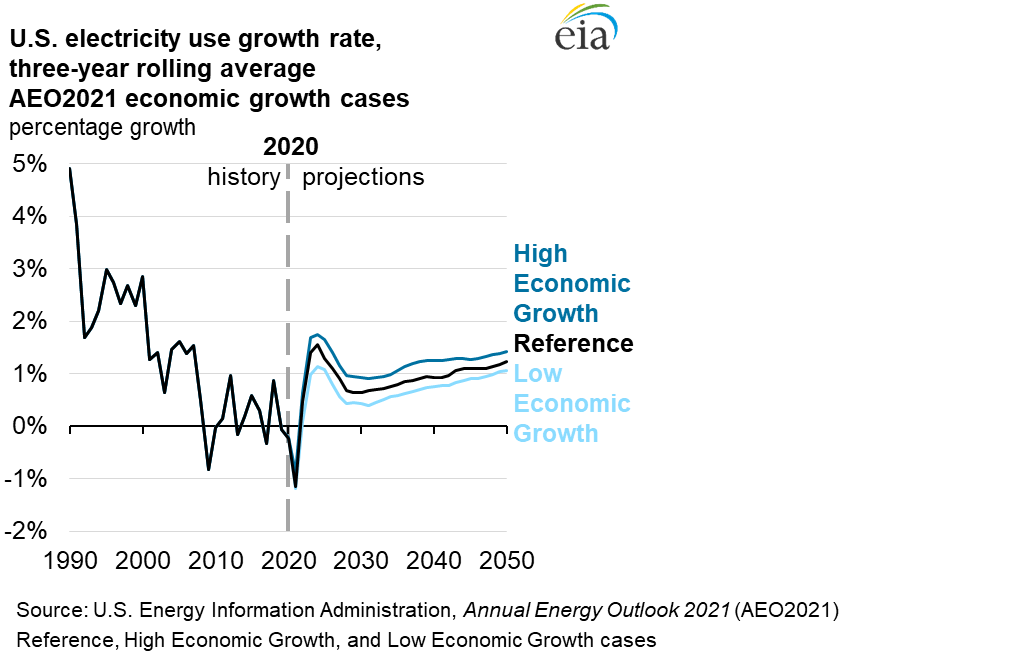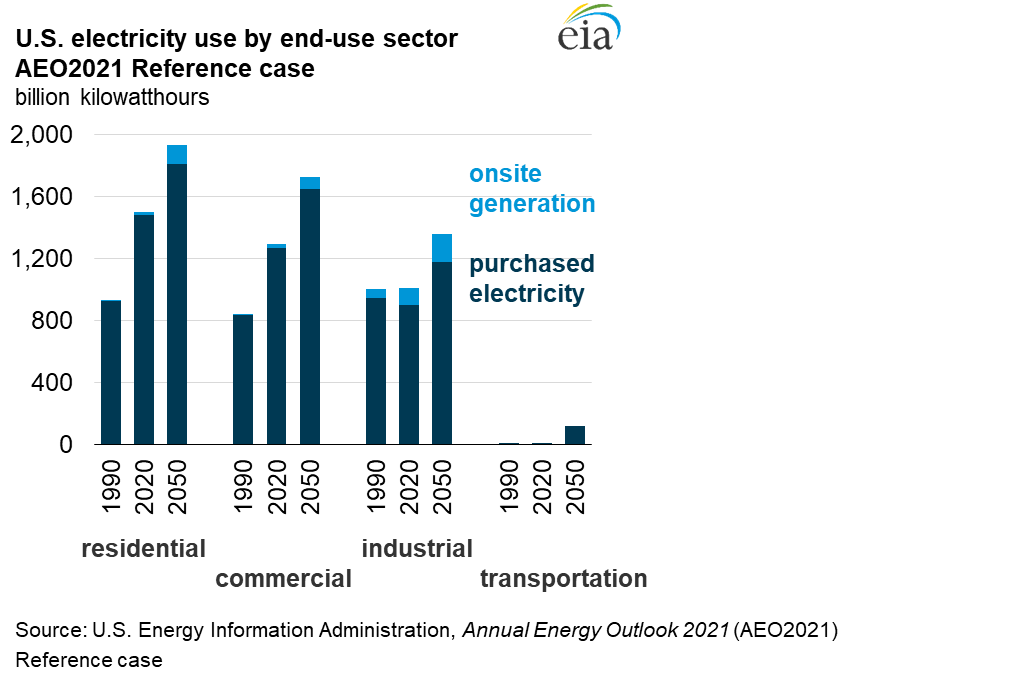
- Key takeaways from the Reference case and side cases
- The Annual Energy Outlook 2022 explores long-term energy trends in the United States
- What is the AEO2022 Reference case?
- What are the side cases?
- Motor gasoline remains the most prevalent transportation fuel despite electric vehicles gaining market share
- Energy-related carbon dioxide (CO2) emissions dip through 2035 before climbing later in the projection years
- Energy consumption increases through 2050 as population and economic growth outweighs efficiency gains
- Electricity continues to be the fastest-growing energy source in buildings, with renewables and natural gas providing most of the incremental electricity supply
- Electricity demand grows slowly across the projection period, which increases competition among fuels
- Renewable electricity generation increases more rapidly than overall electricity demand through 2050
- Battery storage complements growth in renewables generation and reduces natural gas-fired and oil-fired generation during peak hours
- As coal and nuclear generating capacity retire, new capacity additions come largely from wind and solar technologies
- U.S. production of natural gas and petroleum and other liquids rises amid growing demand for exports and industrial uses
- Driven by rising prices, U.S. crude oil production in the Reference case returns to pre-pandemic levels in 2023 and stabilizes over the long term
- Refinery closures lower domestic crude oil distillation operating capacity, but refinery utilization rates remain flat over the long term
- Consumption of renewable diesel increases as a share of the domestic fuel mix
Electricity demand grows at a modest rate throughout the projection period

Annual average electricity growth rate is less than 1% from 2020 to 2050 in the Reference case
In the short term, demand for electricity may fluctuate as a result of year-to-year weather changes, but EIA projects that longer-term trends in electricity demand are driven by economic growth, and are somewhat offset by efficiency improvements. In the AEO2021 Reference case, after electricity demand returns to 2019 levels (following the impacts of COVID-19) in 2022, the average annual growth rate surpasses 1% only toward the end of the projection period. EIA projects electricity demand in the AEO2021 High Economic Growth case to grow at about one-quarter of a percentage point faster than in the Reference case, and it projects electricitiy demand in the Low Economic Growth case to grow at about one-quarter of a percentage point slower than in the Reference case.
COVID-19’s projected impacts on electricity demand are short term in the Reference case
Although shifting weather patterns and efficiency improvements explain some of the near-term changes in electricity demand, the COVID-19 pandemic and associated economic downturn has a role as well, resulting in a near-term decline in electricity demand. EIA does not project long-term structural changes in electricity demand resulting from the pandemic, and the AEO2021 Reference case projects that demand largely returns to 2019 levels by 2025. Before 2025, higher residential sector demand partially offsets lower electricity demand from the commercial and industrial sectors.
The share of onsite electricity generation increases across non-transportation sectors

The growth in electricity sales from vendors is lessened by significant growth in onsite generation in the residential, commercial, and industrial sectors. Installation of rooftop photovoltaic (PV) systems, primarily on residential and commercial buildings, and combined-heat-and-power systems in industrial and some commercial applications, will account for more than 7% of total electricity generation by 2050, almost doubling the 2020 share of onsite power generators.
Electricity demand in transportation remains low
Although the greatest potential for increased electricity demand is within the transportation sector, electricity demand from this sector remains less than 3% of economy-wide electricity demand throughout the projection period. Current laws and regulations are not projected to induce much market growth, despite continuing improvements in electric vehicles (EVs) through evolutionary market developments. Both vehicle sales and utilization (miles driven) would need to increase substantially for EVs to raise electric power demand growth rates by more than a fraction of a percentage point per year.
EIA does not project long-term structural changes in electricity demand resulting from the pandemic, and the AEO2021 Reference case projects that demand largely returns to 2019 levels by 2025..
-
Additional information:
-
Previous Editions of the AEO
-
Documentation and Assumptions